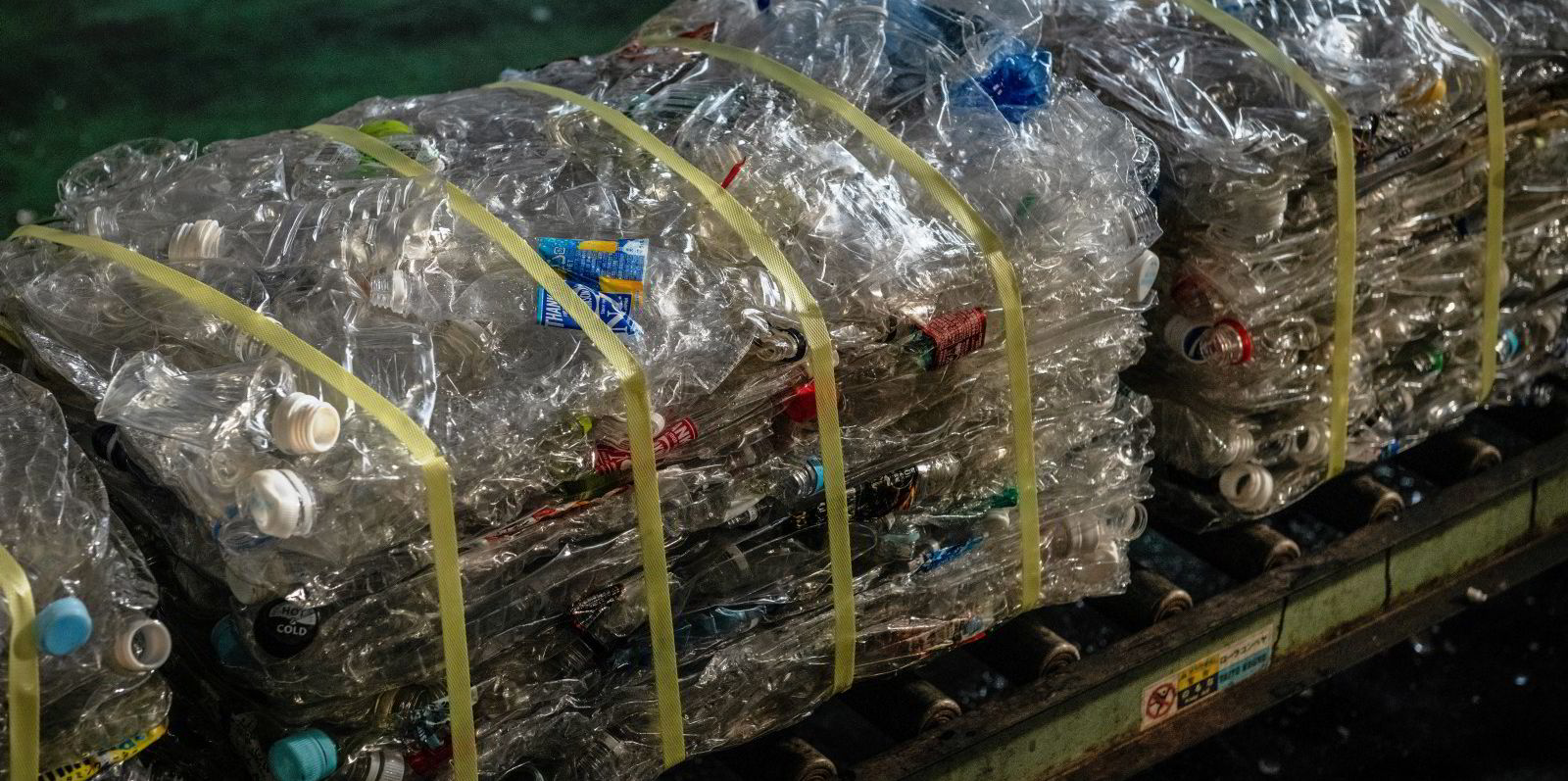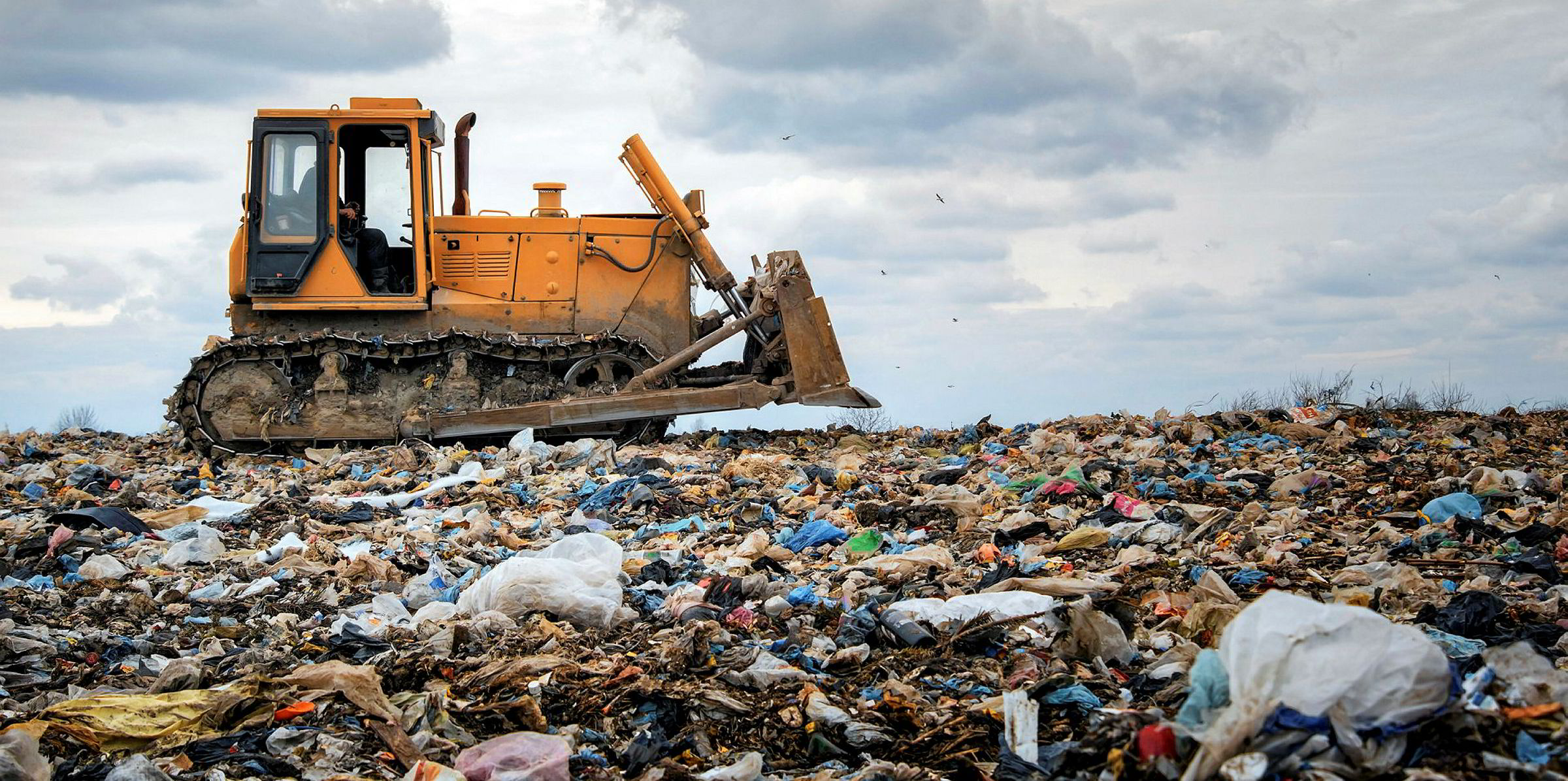Toyota, Iwatani and JGC to work together on a potential new source of the clean gas as Japan attempts to build a hydrogen economy

Bales of crushed plastic waste in Tokyo desitined for recycling or incineration.
Photo: Getty
6 January 2022
By Leigh Collins
Three major Japanese corporations — car maker Toyota, industrial gases giant Iwatani and engineer JGC Holdings (formerly Japanese Gasoline Co) — are teaming up to produce clean hydrogen from household and industrial plastic waste by 2025, according to Japanese financial newspaper Nikkei.
Producing hydrogen from waste is a fairly new but growing sector that has, so far, mainly been the preserve of start-ups such as California’s Ways2H and SGH2. So the news that major international companies are moving into the field could prove to be a significant development for the sector.
It might also be a boon for Japan’s decarbonisation efforts. Due to the island nation’s lack of fossil fuels and a scarcity of available land to build renewables, it is planning to build a vast hydrogen economy, even though it would have to import most of its H2.
And, according to Ways2H, it is much cheaper to produce hydrogen waste than renewables.

'It's much cheaper to produce green hydrogen from waste than renewables'
6 January 2022
By Leigh Collins
Three major Japanese corporations — car maker Toyota, industrial gases giant Iwatani and engineer JGC Holdings (formerly Japanese Gasoline Co) — are teaming up to produce clean hydrogen from household and industrial plastic waste by 2025, according to Japanese financial newspaper Nikkei.
Producing hydrogen from waste is a fairly new but growing sector that has, so far, mainly been the preserve of start-ups such as California’s Ways2H and SGH2. So the news that major international companies are moving into the field could prove to be a significant development for the sector.
It might also be a boon for Japan’s decarbonisation efforts. Due to the island nation’s lack of fossil fuels and a scarcity of available land to build renewables, it is planning to build a vast hydrogen economy, even though it would have to import most of its H2.
And, according to Ways2H, it is much cheaper to produce hydrogen waste than renewables.

'It's much cheaper to produce green hydrogen from waste than renewables'

‘Greener-than-green hydrogen to be produced at same cost as grey H2 at world’s largest facility’Read more
The country also has a major problem with plastic waste, producing 9.4 million tonnes of it every year, with the average citizen generating 37kg of single-use plastic waste in 2019. Relatively little plastic is recycled domestically, with 12% exported, 67% incinerated — causing about 13 million tonnes of CO2 equivalent annually — and 8% dumped in landfill.
The Japanese corporations plan to pulverize the collected plastic, then burn it in low-temperature and high-temperature gasification furnaces to produce a synthetic gas (syngas) containing carbon monoxide and hydrogen. Water vapour will then be added to the gas to increase the concentration of hydrogen, which will then be removed by an adsorber.
The cost of the hydrogen will be offset by payment for waste disposal collection.
The partners are now looking for a site for a demonstration project.
JGC will be in charge of the plant design, Iwatani will be responsible for transporting hydrogen, while Toyota Tsusho, the trading arm of Toyota — which produces the Mirai hydrogen fuel-cell car — is collaborating on the pilot project.
Japan plans to produce 10% of its electricity from hydrogen and ammonia by 2050, and to have 800,000 fuel-cell cars on the roads, along with five million residential fuel cells, by 2030.
No comments:
Post a Comment